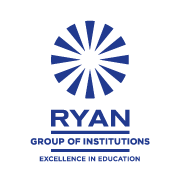In an age of rapid technological advancement and information overload, the world of education is inevitably changing. The traditional education model, once robust and unchanging, now requires rethinking, reshaping, and adapting. One of the most promising adaptations is the concept of Nano Learning. It’s an approach that aligns with the children’s growing inclination towards digital technology and the ‘snackable’ consumption of information. As we unravel the potential benefits of this innovative pedagogical strategy for K-12 education, we also seek to provide a guide on its effective implementation.
Understanding Nano Learning
Nano learning, a term drawn from the Greek ‘nanos’ meaning ‘dwarf’, represents small, focused, bite-sized learning experiences. These are typically 2-10 minutes in length, digitally delivered, and designed to meet specific learning outcomes. The idea is to break down complex topics into smaller, easily digestible chunks, making the learning process less overwhelming and more engaging for young minds.
Benefits of Nano Learning in K-12 Education
Enhanced Engagement: Nano learning reduces the monotony of traditional, lengthy learning sessions. It includes interactive content such as videos, quizzes, and games, which naturally engage children and foster their curiosity.
Retention and Understanding: Breaking down complex ideas into manageable pieces can enhance comprehension. Research shows that our brains are more adept at remembering information when presented in smaller chunks, a concept known as the ‘chunking’ theory in cognitive psychology.
Personalization and Flexibility: Nano learning allows for adaptive and personalized learning pathways. Learners can progress at their own pace, rewatch videos, or redo activities until they achieve mastery.
Digital Literacy: Incorporating technology into learning processes encourages students to become adept at using digital tools. This skill is increasingly crucial in our tech-driven world.
Implementing Nano Learning in K-12 Education
Curriculum Design: The first step in implementing nano learning is designing a curriculum that allows for ‘bite-sizing’. Complex concepts should be deconstructed into smaller, independent learning modules. This requires educators to have a thorough understanding of the subjects and a clear vision of learning objectives.
Blended Learning Environment: Nano learning should not replace traditional learning but instead supplement it. A blended learning environment, where online and offline activities coexist, can maximize the advantages of both traditional and digital learning methods.
Choosing the Right Technology: The selection of a user-friendly, engaging, and secure digital platform is vital. It should facilitate easy access to learning materials and allow tracking of student’s progress.
Teacher Training: Educators need to be familiar with the pedagogy of nano learning and the use of technology in delivering it. Providing teachers with the necessary professional development opportunities ensures a smooth transition to this new teaching approach.
Embracing Nano Learning at Home
The role of parents in a child’s education is undeniably critical. With the emergence of nano learning as an influential pedagogical strategy, parents are positioned to support this innovative approach at home. However, like all educational tools, nano learning comes with its own set of best practices and potential pitfalls to be wary of.
Implementing Nano Learning at Home
Organizing Learning Materials: Parents can take the lead in organizing nano learning materials for their kids. This could involve sourcing quality, age-appropriate resources, such as educational videos, interactive quizzes, and games. These resources can be divided according to subjects and learning goals.
Creating a Schedule: While nano learning offers flexibility, maintaining a consistent learning schedule is essential. This provides structure and helps children establish a routine.
Monitor and Guide: Parents should play an active role in their child’s nano learning journey, monitoring progress and providing necessary guidance. This includes discussing learning modules, asking follow-up questions, and encouraging the application of the learned concept in real-life situations.
Encouraging Breaks: Since nano learning modules are short, it might be tempting to do many at once. However, it is crucial to encourage regular breaks. The Pomodoro Technique, for instance, suggests a 5-minute break for every 25 minutes of focused activity. This allows the brain to process and consolidate the information.
Notes of Caution
While nano learning has its advantages, it’s important to keep the following considerations in mind:
Screen Time: One potential concern is increased screen time. Too much screen exposure can lead to issues like eye strain, poor posture, and sleep disturbances. It is therefore important to ensure a balance between digital and non-digital activities.
Reliance on Self-Regulation: Nano learning, especially in a home environment, requires a level of self-regulation and discipline that younger children might struggle with. Parents need to provide support and gradually cultivate these skills.
Quality of Content: While the internet is a treasure trove of information, not all content is accurate or suitable. Parents should ensure the resources used are from reliable sources and align with the child’s learning needs.
Social Interaction: Learning should not be an isolated activity. Children also learn a great deal from interacting with their peers. Thus, opportunities for collaborative learning should be facilitated alongside nano learning.
Role of Traditional Learning: Nano learning should supplement, not replace, traditional forms of learning. Reading longer texts, engaging in detailed project work, and comprehensive exploration of topics are still crucial for deeper learning and critical thinking skills.
While nano learning presents an exciting avenue to support children’s education at home, its implementation requires a mindful and balanced approach. With the right execution and a keen eye for potential pitfalls, parents can use nano learning as a powerful tool to enrich their children’s learning journey. Nano learning is an exciting frontier in K-12 education. Its promise of more engaging, flexible, and effective learning aligns perfectly with the needs of 21st-century learners. As we navigate the constant changes in our educational landscape, embracing innovative approaches like nano learning will be paramount in nurturing a generation of lifelong learners. In the hands of skilled, motivated educators and with the support of parents, nano learning can truly redefine the K-12 education experience.




